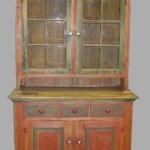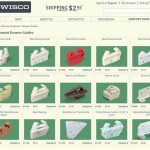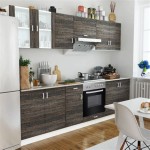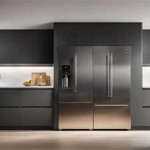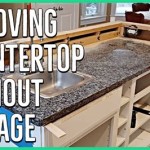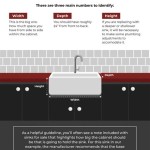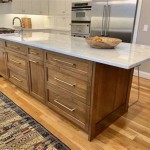```html
Full Overlay Kitchen Cabinets: A Comprehensive Guide
Full overlay kitchen cabinets represent a significant design choice impacting both the aesthetic appeal and functionality of a kitchen. In this style, the cabinet doors and drawer fronts completely cover the cabinet frame, creating a streamlined and modern look. Unlike traditional cabinet designs where a portion of the frame is visible, full overlay cabinets minimize gaps and maximize the visible surface area of the doors and drawers.
The selection of cabinet style is a key decision in any kitchen renovation or new construction project. The cabinet style influences the overall design theme, contributing to either a modern, transitional, or traditional aesthetic. Full overlay cabinets are particularly well-suited for contemporary and minimalist designs, though they can be incorporated into transitional styles as well.
This article will delve into the characteristics, advantages, disadvantages, installation considerations, design implications, and cost factors associated with full overlay kitchen cabinets, providing a detailed understanding for homeowners and design professionals considering this cabinet style.
Defining Features of Full Overlay Cabinets
The primary distinguishing feature of full overlay cabinets is the extent to which the doors and drawer fronts cover the cabinet frame. In this configuration, the doors and drawer fronts typically cover the entire face frame, leaving only a minimal gap between adjacent doors and drawers. This narrow reveal, usually around 1/8 to 1/4 inch, creates a nearly seamless appearance across the cabinet face. This minimal gap is crucial for allowing doors and drawers to open and close without obstruction.
This contrasts with partial overlay cabinets, where a significant portion of the face frame is visible, and inset cabinets, where the doors and drawer fronts fit inside the frame, flush with the surrounding edges. The reduced exposure of the cabinet frame in full overlay designs contributes to a more contemporary and less traditional aesthetic.
The hardware selection for full overlay cabinets plays a crucial role in both the appearance and functionality. Due to the minimal gap between doors and drawers, specialized hinges are often required. These hinges, typically concealed European-style hinges, allow for precise alignment and smooth operation. The choice of pulls and knobs also influences the overall design. Simple, modern hardware complements the sleek lines of full overlay cabinets, while more ornate hardware can be used to create a transitional look.
Advantages of Full Overlay Cabinets
Full overlay cabinets offer several advantages in terms of aesthetics, functionality, and perceived value. Firstly, the streamlined appearance contributes to a modern and uncluttered kitchen design. The minimal reveal creates a sense of visual continuity, making the kitchen appear more spacious and organized. This is particularly beneficial in smaller kitchens, where maximizing the feeling of open space is a priority.
Secondly, full overlay cabinets often appear more expensive and high-end than partial overlay or framed cabinets. The clean lines and seamless appearance contribute to a perception of quality and craftsmanship. This can be a significant selling point for homeowners looking to increase the value of their homes. Although the material and construction quality heavily influence the actual cost, their visual appeal is often associated with luxury.
Thirdly, full overlay cabinets may offer slightly improved storage capacity compared to framed cabinets. Because the doors and drawer fronts cover the entire frame, there is no wasted space around the opening. While the difference in usable space is often minimal, it can be a factor in kitchens where maximizing storage is essential. The clear and unimpeded opening available when the door or drawer is opened also enhances accessibility to stored items.
Disadvantages and Considerations for Full Overlay Cabinets
Despite their aesthetic and functional advantages, full overlay cabinets also present certain disadvantages and considerations that homeowners should be aware of. One potential drawback is the increased cost compared to other cabinet styles. The specialized hardware and more precise construction requirements can contribute to a higher price point.
Installation of full overlay cabinets requires a higher degree of precision and skill. Because the doors and drawer fronts are so close together, even minor misalignments can be noticeable and problematic. Professional installation is generally recommended to ensure proper alignment and smooth operation. Poor installation can lead to doors rubbing against each other, or drawers not closing correctly, diminishing the aesthetic appeal and functionality of the cabinets.
Another consideration is the potential for damage to the cabinet doors and drawer fronts. Because the doors and drawers are so close together, they are more susceptible to scratching or chipping if they are not handled carefully. This is particularly important to consider in high-traffic kitchens or households with young children. The choice of materials and finishes can influence the durability of the doors and drawer fronts. For example, painted finishes may be more prone to chipping than stained wood. Selecting a durable, high-quality finish is crucial for longevity.
The close proximity of doors and drawers also means that hardware choices are more limited. Large or bulky pulls may interfere with the opening and closing of adjacent doors and drawers. Simple, streamlined hardware is generally the best choice for full overlay cabinets. The placement of hardware also requires careful planning to ensure that it is both functional and aesthetically pleasing.
Furthermore, the completely flat front of full overlay cabinets can sometimes highlight imperfections in the walls or floors. If the walls or floors are not perfectly level, the cabinets may appear slightly uneven. Careful planning and preparation of the subfloor and walls are essential to ensure a seamless installation.
Installation and Adjustment
The installation of full overlay cabinets is a critical step that directly impacts the overall success of the kitchen renovation. Due to the close tolerances and minimal gaps, precise measurements and careful installation techniques are crucial. Professional installation is highly recommended, although experienced DIYers can undertake the project with careful planning and attention to detail.
The first step in the installation process is to ensure that the walls and floors are level and plumb. Any imperfections in the walls or floors must be addressed before the cabinets are installed. Shimming may be necessary to create a level surface for the cabinets. Accurate measurements are essential to ensure that the cabinets are properly aligned and spaced. It's important to follow the manufacturer’s instructions meticulously.
Once the cabinets are installed, the doors and drawer fronts must be adjusted to ensure proper alignment and smooth operation. This is typically done using the adjustable hinges. The hinges allow for fine-tuning of the door position in three dimensions: height, depth, and side-to-side. Patience and precision are required to achieve a perfectly aligned cabinet face. It is often easier to adjust cabinets one at a time, checking the alignment of each door and drawer against its neighbors.
Properly adjusted hinges are essential to prevent doors from rubbing against each other or the cabinet frame. If the doors are not properly aligned, they may also not close tightly, leading to drafts and dust accumulation. Periodic adjustments may be necessary over time as the cabinets settle and the hinges loosen. The initial effort in carefully aligning the doors and drawers pays dividends in terms of the long-term appearance and functionality of the kitchen.
Hardware installation should occur after the doors and drawers are aligned. Precise placement of pulls and knobs is important for both aesthetics and functionality. A template can be used to ensure consistent placement of hardware across all the doors and drawers.
Design Considerations with Full Overlay Cabinets
Full overlay cabinets offer a clean and modern aesthetic that can complement a variety of kitchen design styles. However, they are particularly well-suited for contemporary and minimalist designs. The streamlined appearance and minimal reveal contribute to a sense of simplicity and elegance.
The choice of materials and finishes can significantly impact the overall look of full overlay cabinets. Solid wood doors with a stained finish create a warm and inviting atmosphere, while painted doors offer a more contemporary and versatile option. High-gloss finishes can enhance the modern look, while matte finishes provide a more subtle and sophisticated appearance. The material used impacts the price heavily as well as the long term maintenance requirements.
The countertop material also plays a crucial role in complementing full overlay cabinets. Quartz and granite countertops are popular choices for their durability and aesthetic appeal. The color and pattern of the countertop should be carefully selected to coordinate with the cabinet finish. For instance, white cabinets pair well with a variety of countertop colors, while darker cabinets may require lighter countertops to create contrast.
Backsplash tile is another important design element that can tie the kitchen together. Simple subway tile backsplashes are a classic choice that complements the clean lines of full overlay cabinets. More elaborate backsplashes can be used to add visual interest and personality to the kitchen. The backsplash can introduce pops of color, texture, or pattern to break up the monotony of a simple cabinet design.
Lighting is also a crucial consideration in kitchen design. Under-cabinet lighting can highlight the countertop and backsplash, while pendant lights can add visual interest and provide task lighting over the island or sink. Proper lighting can also help to accentuate the clean lines and modern aesthetic of full overlay cabinets.
Cost Factors Associated with Full Overlay Cabinets
The cost of full overlay cabinets can vary depending on several factors, including the materials used, the complexity of the design, and the installation costs. Generally, full overlay cabinets are more expensive than partial overlay cabinets due to the specialized hardware and more precise construction requirements.
The type of wood used for the cabinet doors and drawer fronts is a major cost factor. Solid wood is more expensive than engineered wood products such as plywood or MDF. The finish also impacts the cost, with painted finishes typically being more expensive than stained finishes due to the additional labor required for preparation and application.
Custom cabinets are generally more expensive than stock or semi-custom cabinets. Custom cabinets offer greater flexibility in terms of design and sizing, but they also require more time and labor to produce. Stock cabinets are pre-made in standard sizes, while semi-custom cabinets offer a limited range of modifications and customization options.
The hardware selection also contributes to the overall cost of full overlay cabinets. High-quality hinges and pulls can add to the price, but they are important for ensuring the smooth operation and longevity of the cabinets. The choice of hardware should reflect the overall style and quality of the kitchen.
Installation costs vary depending on the complexity of the project and the experience of the installer. Professional installation is generally recommended for full overlay cabinets to ensure proper alignment and smooth operation. Obtaining quotes from multiple installers is advisable to compare pricing and services.
Overall, homeowners should carefully consider their budget and design goals when choosing full overlay cabinets. While they offer a modern and elegant aesthetic, they also come with a higher price tag than other cabinet styles. Weighing the advantages and disadvantages carefully is necessary to make an informed decision and determine if full overlay cabinets are the right choice for their kitchen renovation project.
```
What Is Cabinet Overlay Showplace Cabinetry

Full Overlay Kitchen Cabinet Photos Ideas Houzz

Full Overlay Standard Cabinets Diamond Kitchen And Bath

Cabinetry 101 Understanding Overlay Cabinet Doors Dura Supreme

Cabinet Types Inset Cabinetry Vs Overlay

Inset Vs Overlay Cabinets What S The Difference

What Is Full Overlay Definition Of

34 Full Overlay Cabinets For Your Next Home Renovation

American Framed Full Overlay Grey Shaker Kitchen Cabinet Furniture Supplier China S Cabinets Made In Com
Kitchen Cabinet Doors Full Overlay Partial And Inset Degnan Design Build Remodel
Related Posts

